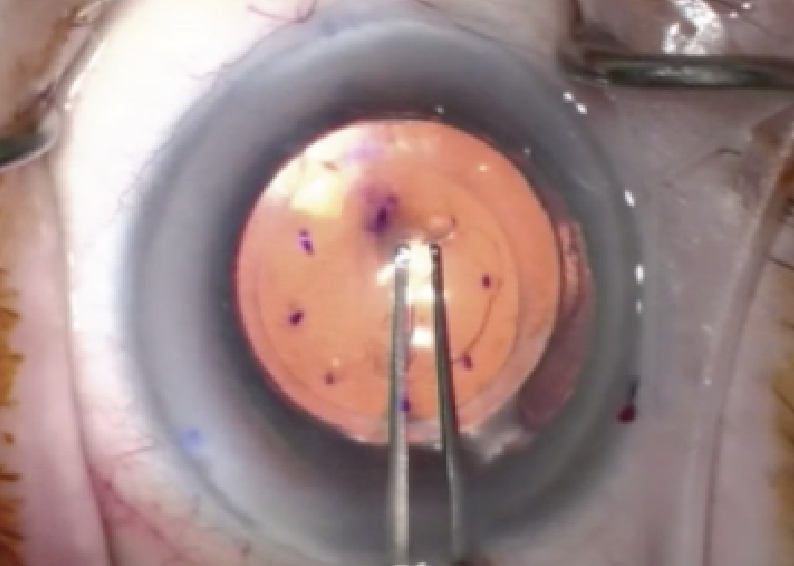 |
| An innovative procedure for Fuchs’ epithelial disease known as DSO demonstrated effectiveness and durability through seven years in a new study, in which 22 of 26 eyes responded to the intervention. Photo: Ranjani Panda, OD. Click image to enlarge. |
In Fuchs’ endothelial disease, the gold standard for treatment has long been Descemet’s membrane endothelial keratoplasty (DMEK). However, a newer procedure— Descemet’s stripping only (DSO)—that requires no donor tissue has gained popularity in recent years. A recent study reported on the technique’s long-term durability on a small cohort of patients with up to seven years of follow-up. The researchers just published their findings in the journal Cornea, which we will summarize below.
Included in the retrospective study were 26 eyes (20 patients) that underwent DSO at some point during a seven-year period. Eligibility criteria included peripheral endothelial cell count above 1000 cells/mm2 and symptoms caused by central guttata. The mean age was 73 years (range: 52 to 90 years) and the average follow-up was 23.7 months. The researchers described in their paper that “Patients underwent a central circular 4mm descemetorhexis using a reverse Sinskey hook and a pair of descemetorhexis forceps using a peeling technique.” Pre-operatively and at final follow-up, the following three parameters were measured: BCVA, central corneal thickness (CCT) and endothelial cell count both centrally and at the periphery.
Twenty-two of the 26 eyes responded to DSO. The researchers reported the following results from the data:
- The mean postoperative BCVA improved from 0.3 logMAR to 0.09 logMAR.
- The mean CCT decreased from 588mm before surgery to 546mm post-op.
- The mean postoperative central endothelial cell count was 780 cells/mm2.
- Peripheral endothelial cell count decreased postoperatively (1,837 cells/mm2 pre-op to 864 cells/mm2 post-op).
- Peripheral endothelial cell polymegethism remained stable (average 26.8% pre-op and 30.2% post-op).
- Average peripheral endothelial cell polymorphism decreased postoperatively (63.1% pre-op vs. 33% post-op).
|
For more on DSO, see this summary and video of the procedure. |
The four eyes that did not show improvement after DSO underwent DMEK. The study authors noted in their paper, “The preoperative trend was for nonresponders to have lower BCVA, higher CCT, more abnormal peripheral polymorphism and polymegathism.”
While the sample size in this study was small, several conclusions can be drawn from its results, the researchers argue. First and foremost, the largely positive long-term outcomes observed add to the growing evidence that DSO is a viable treatment option for patients with Fuchs. Secondly, the results reinforce that suitable candidates are patients with central guttata and a good peripheral cell count (1000 cells/mm2), as existing literature also describes.
The study authors also note that they believe the specific technique of DSO used in this study played a hand in the positive outcomes achieved. “Success of the procedure depends on the technique used, with a small descemetorhexis of 4mm and using the peeling technique, resulting in a significant increase in central endothelial cell count and subsequent improvement in visual acuity postoperatively,” they wrote in their paper.
This new research adds to the growing vault of evidence that DSO is an effective, durable option for select patients with Fuchs endothelial disease. The authors suggest that future studies may help to understand prognostic factors and improve patient selection.
Rizk M, Dubois M, Elahi S, et al. Long-term follow-up of Descemet stripping only: data up to 7 years postoperatively. Cornea. December 26, 2023. [Epub ahead of print]. |

